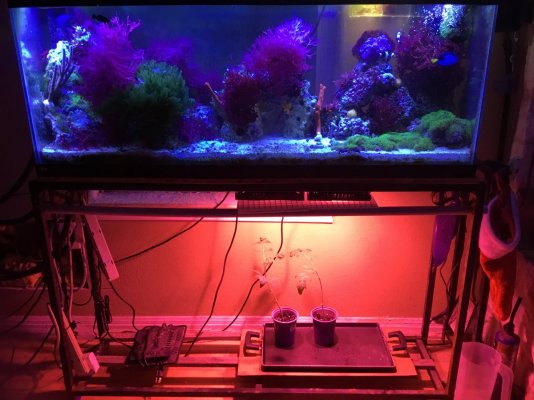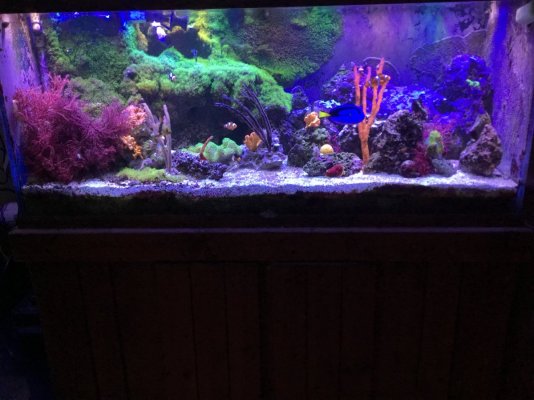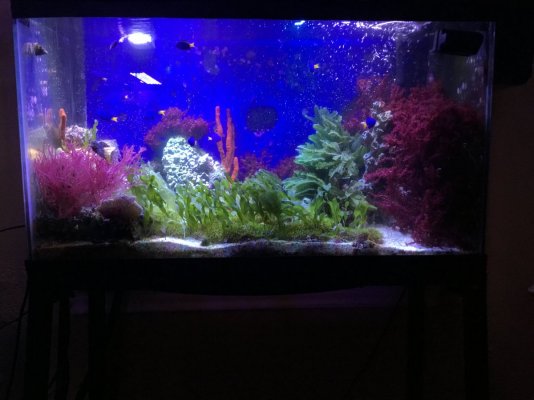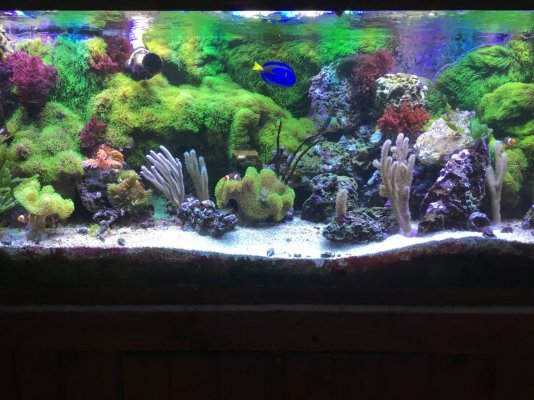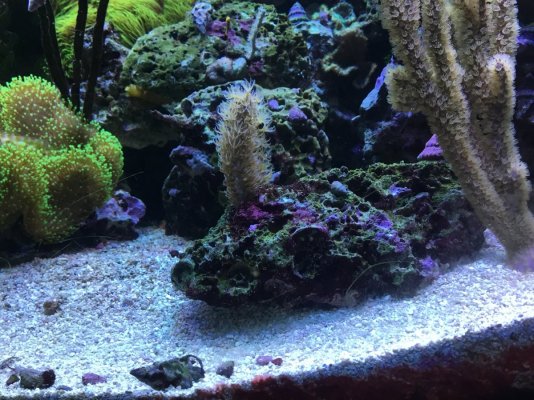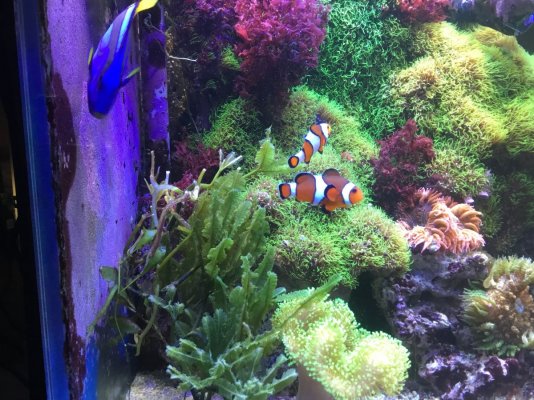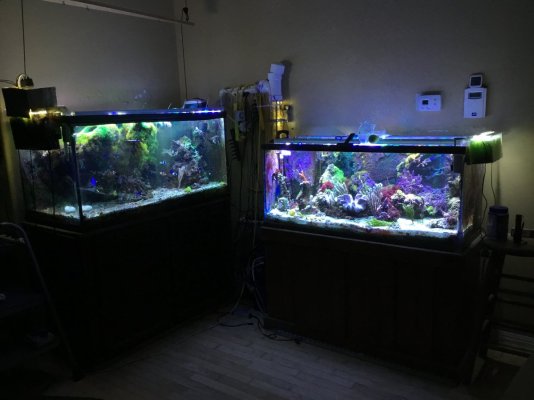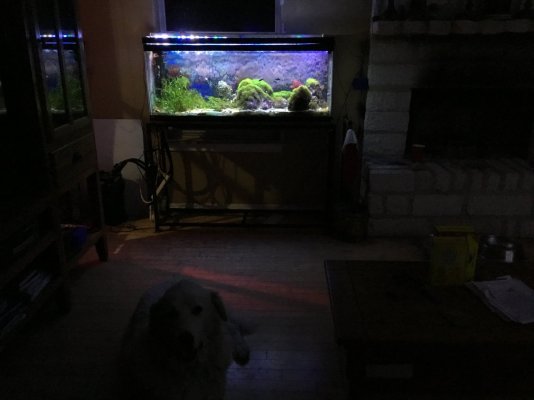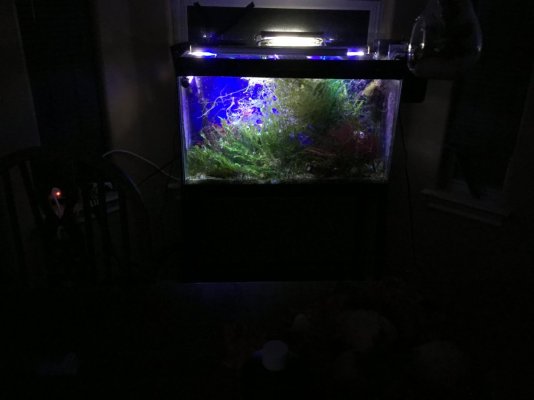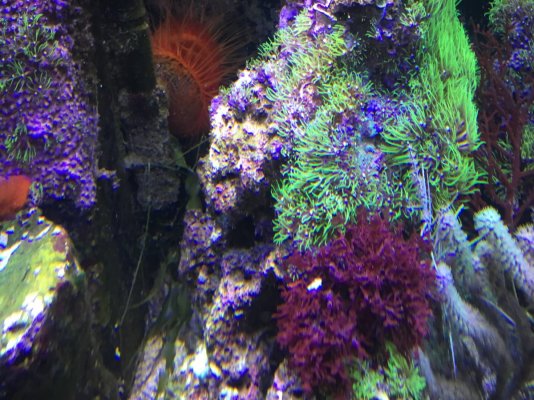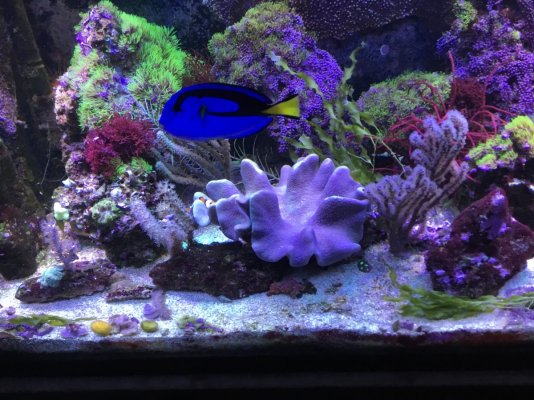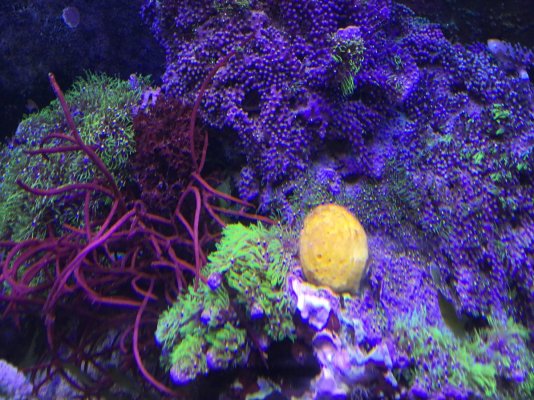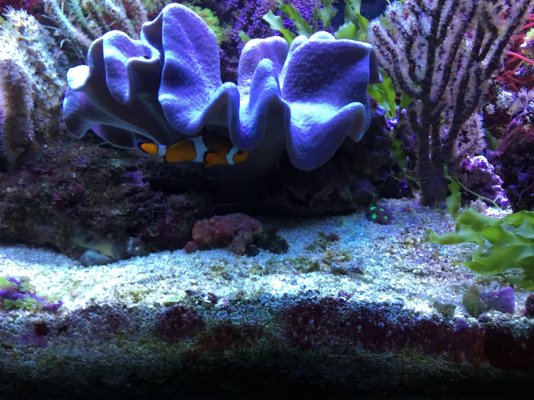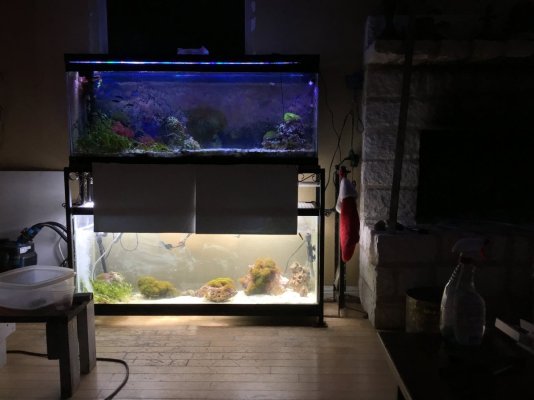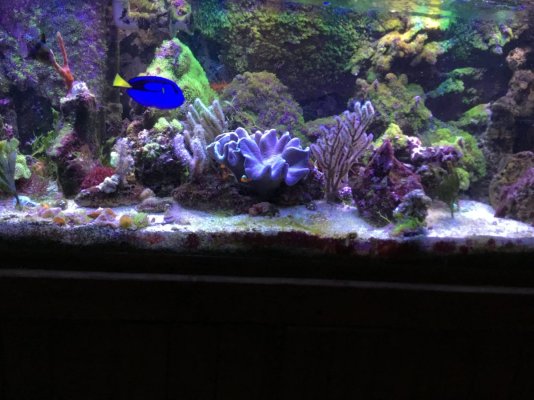Thanks, I think the work that Jamie Craggs and team are undertaking is not only fascinating from an observational aspect but also hugely important for the future of the worlds reefs. These types of research projects never seem to attract the funding they really deserve, so every little helps.
Navigation
Install the app
How to install the app on iOS
Follow along with the video below to see how to install our site as a web app on your home screen.
Note: This feature may not be available in some browsers.
More options
You are using an out of date browser. It may not display this or other websites correctly.
You should upgrade or use an alternative browser.
You should upgrade or use an alternative browser.
Nutrient Management by “Old School” Reefer
- Thread starter Subsea
- Start date
-
- Tags
- if it aint broke
- Tagged users None
The Great Oxidation Event on Earth occurred > 2 billion years ago and blue green Cynobacteria made it happen. Previous to the event, earths early athmosphere was methane & sulfur and all microbes were anarobial. Cynobacteria did two things to make earth habitual for people that breath oxygen & exhale carbon dioxide.& plants that breath carbon dioxide & exhale oxygen.
Cynobacteria break down water in two seperate processes. Nitroven fixation is the process in which bacteria chemistry converts free nitrogen gas molecule into NO4 which is absorbed into bacteria biomass along with other nutrients as a primary producer that moves carbon up the food chain. The more important process is reduction chemistry in which bacteria seperate the chemical bond of H20 into hydrogen & oxygen.
The two process discribed above require efficient gas exchange at water air interface to use gas constants of oxygen & carbon dioxide in water to seek Dynamic Equilibrium.
Without nitrogen fixation, planet earth would be brown, not green. One other process to cycle molecular nitrogen into a usable nutrient of NO4 is intense voltage in lightening, that’s why April showers bring May flowers.
Cynobacteria break down water in two seperate processes. Nitroven fixation is the process in which bacteria chemistry converts free nitrogen gas molecule into NO4 which is absorbed into bacteria biomass along with other nutrients as a primary producer that moves carbon up the food chain. The more important process is reduction chemistry in which bacteria seperate the chemical bond of H20 into hydrogen & oxygen.
The two process discribed above require efficient gas exchange at water air interface to use gas constants of oxygen & carbon dioxide in water to seek Dynamic Equilibrium.
Without nitrogen fixation, planet earth would be brown, not green. One other process to cycle molecular nitrogen into a usable nutrient of NO4 is intense voltage in lightening, that’s why April showers bring May flowers.
Because of recent inquiries on another thread concerning reverse flow undergravel filter function, I forgot to emphasize the added benefit of plenum void under sandbed as a cryptic refugium.
On 6 month young 55G ornamental seaweed lagoon, tank was cycled with dry aragonite & bottled bacteria to complete nitrification bacteria cycle, then 50 lbs of diver collected sand was added bringing sandbed depth to 2” along with 50 lbs of diver collected uncured live rock. The reverse flow undergravel filter is powered by 250 GPHr cannister filer filled with mature reef rubble inoculated with cryptic sponges & pods. A second 250 GPHr cannister filer filled with dry reef rubble, to inoculate other tanks, provides robust flow with 300 GPHr power head . Flow is at the surface from left to right then 300 GPHr HOB on right side turn flow down to flow on bottom from right to left in a vertical loop current.
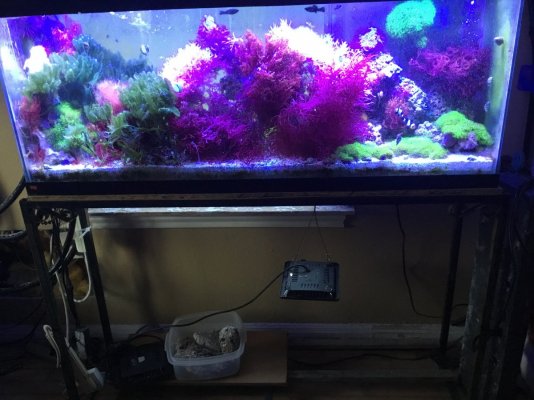
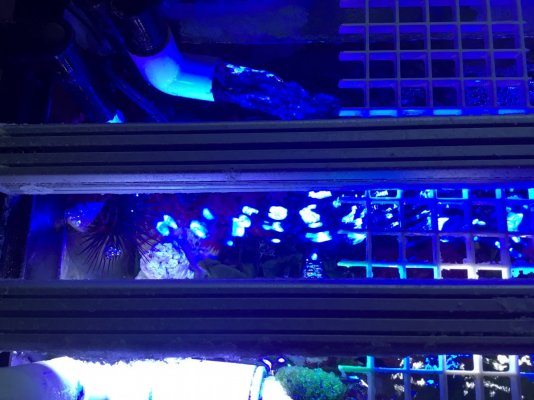
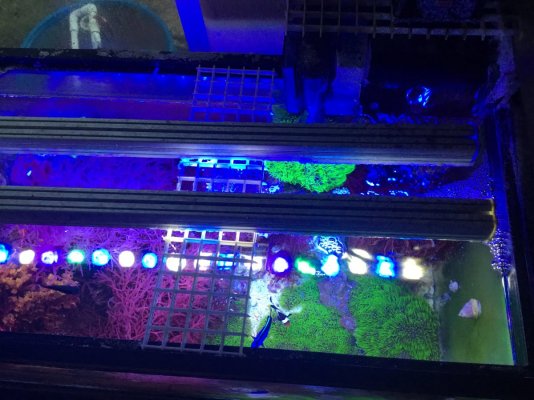
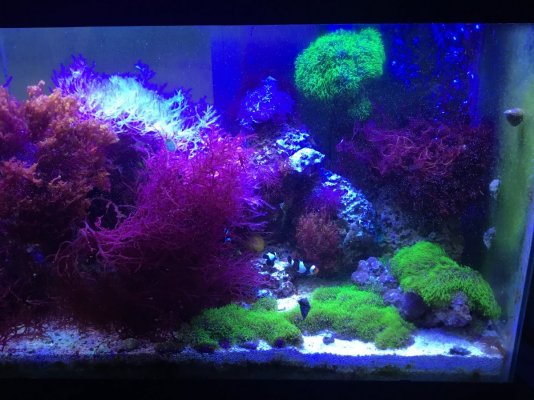
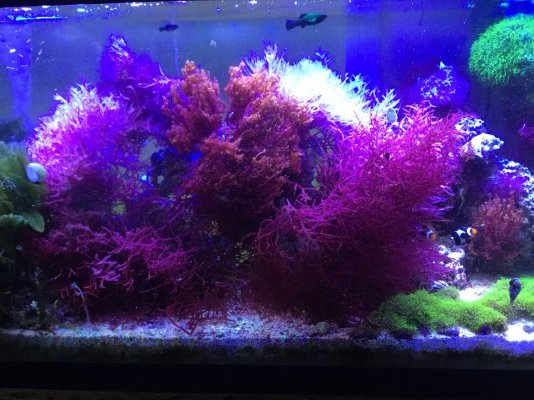
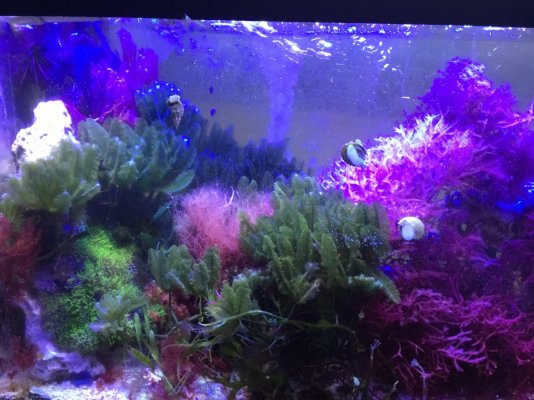
On 6 month young 55G ornamental seaweed lagoon, tank was cycled with dry aragonite & bottled bacteria to complete nitrification bacteria cycle, then 50 lbs of diver collected sand was added bringing sandbed depth to 2” along with 50 lbs of diver collected uncured live rock. The reverse flow undergravel filter is powered by 250 GPHr cannister filer filled with mature reef rubble inoculated with cryptic sponges & pods. A second 250 GPHr cannister filer filled with dry reef rubble, to inoculate other tanks, provides robust flow with 300 GPHr power head . Flow is at the surface from left to right then 300 GPHr HOB on right side turn flow down to flow on bottom from right to left in a vertical loop current.






In the last 2 weeks, three events of macro going sexual in different tanks indicates low nitrogen as a major nutrient.
In the past, my response to seaweed going sexual was to add extra circulation for oxygen and use activated carbon. In all three recent cases, the lights had just come on as I was drinking first coffee of the day.
First event occurred in 6 month mature 55G ornamental seaweed lagoon. With two fast growing Caulerpa and at least five fast growing red macros, I could not see back glass when first light came on. Because this tank has robust circulation, I was not concerned about oxygen so I added 20ml of NH4. The water cleared up in three hours: crystal clear. Later that day, I pruned out the uglies while composting tomatoes. I decided to transfer much red seaweed to 25 yr mature tank that had much much green with GSP & Feather Caulerpa (Paspoides). With addition of much fast growing red macro, they not only consumed nutrients as fast as Feather Caulerpa but they survived on less nutrients. Yes, the Feather Caulerpa went sexual in 25 yr mature tank the next morning. It’s just starting to come back. I added 40ml of NH4 with water clearing up in several hours. That was 10 days ago. This morning, the third event was 6 month mature 30G ornamental seaweed lagoon. This morning was a very mild sexual event requiring 10ml of NH4 with clearing up in less than 1hr with lights on.
In the past, my response to seaweed going sexual was to add extra circulation for oxygen and use activated carbon. In all three recent cases, the lights had just come on as I was drinking first coffee of the day.
First event occurred in 6 month mature 55G ornamental seaweed lagoon. With two fast growing Caulerpa and at least five fast growing red macros, I could not see back glass when first light came on. Because this tank has robust circulation, I was not concerned about oxygen so I added 20ml of NH4. The water cleared up in three hours: crystal clear. Later that day, I pruned out the uglies while composting tomatoes. I decided to transfer much red seaweed to 25 yr mature tank that had much much green with GSP & Feather Caulerpa (Paspoides). With addition of much fast growing red macro, they not only consumed nutrients as fast as Feather Caulerpa but they survived on less nutrients. Yes, the Feather Caulerpa went sexual in 25 yr mature tank the next morning. It’s just starting to come back. I added 40ml of NH4 with water clearing up in several hours. That was 10 days ago. This morning, the third event was 6 month mature 30G ornamental seaweed lagoon. This morning was a very mild sexual event requiring 10ml of NH4 with clearing up in less than 1hr with lights on.
Attachments
I would say that back in the day, while we didn't have the in depth knowledge of the various microbes present on the reef or in a reef aquarium (and in/on the coral itself) that we have today, we did have a pretty good general idea that microbes were in the driver's seat. It was inconceivable that any competent reef aquarist would add substances/products of any sort that had the potential to disrupt a healthy, properly functioning reef biotope.
Nowadays, with the addition of so many products to 'fix anything' (and so little known about possible long term consequences to the microbial communities)...let's just say that things are 'different' and leave it at that.
As I reread this, it brings to light how so few understand the biochemical processes involved in a reef tank. After 50 yrs in this hobby and numerous research papers, I realize how little I know. As I get deeper into it, I realize how complex the coral holobiont is. Everything is connected and dependent on each other.
[As many naturalists and environmentalists have suggested, we should set aside our arrogance,
our desire to conquer and control everything, and walk hand in hand with Mother Nature. -Walter Adey ]
As I reread this, it brings to light how so few understand the biochemical processes involved in a reef tank. After 50 yrs in this hobby and numerous research papers, I realize how little I know. As I get deeper into it, I realize how complex the coral holobiont is. Everything is connected and dependent on each other.
The climate crisis has accelerated scientific knowledge of the reef environment greatly in the last 10-15 years, but there's still much to learn. And some of the answers to our reef aquarist questions can lie buried 'somewhere on the internet'.
For example, I had a microbiome analysis done on my system which was very interesting, but wasn't able to answer the question 'Why did my system have the types and the percentages of bacteria/archaea that it did?'. Then I stumbled on this:
https://www.sciencedaily.com/releases/2016/10/161012144511.htm
Corals promoting the growth of certain types of bacteria in the reef water column that they then preferentially feed upon. The implications in regards to our captive systems are of great interest and suggest (to me) that any methodologies or actions that work against the corals' own efforts to promote an advantageous environment for themselves is bound to be counter productive over the long term.
Last edited:
Kudos to the link.The climate crisis has accelerated scientific knowledge of the reef environment greatly in the last 10-15 years, but there's still much to learn. And some of the answers to our reef aquarist questions can lie buried 'somewhere on the internet'.
For example, I had a microbiome analysis done on my system which was very interesting, but wasn't able to answer the question 'Why did my system have the types and the percentages of bacteria/archaea that it did?'. Then I stumbled on this:
https://www.sciencedaily.com/releases/2016/10/161012144511.htm
Corals promoting the growth of certain types of bacteria in the reef water column that they then preferentially feed upon. The implications in regards to our captive systems are of great interest and suggest (to me) that any methodologies or actions that work against the corals' own efforts to promote an advantageous environment for themselves is bound to be counter productive over the long term.
Pico-plankton communities are the source of the “microbial loop”. @Paul B calls it MULM.
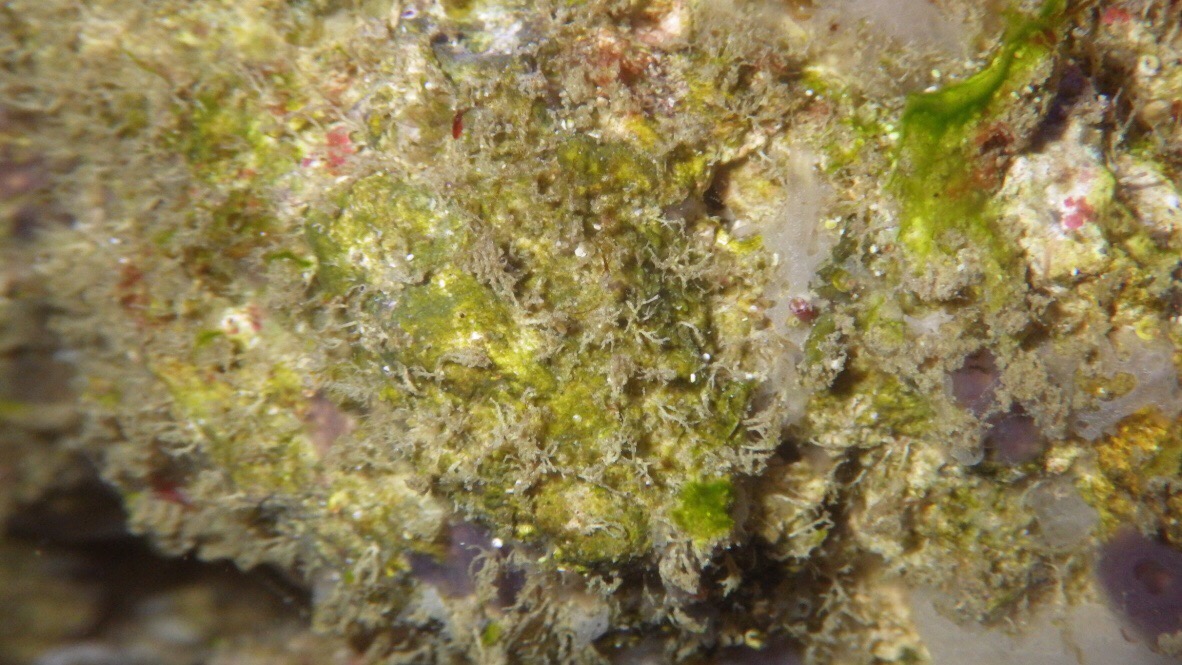
"Mulm" in a reef tank
I think one of the most important, and least understood or mentioned things in a reef tank is "mulm". That stuff that grows in the dark portions of a tank if it is set up long enough. "Mulm" is a combination of algae, sponges, bacteria, pods, worms, detritus, poop and any thing else that can be p...
 wamas.org
wamas.org
Study reveals corals' influence on reef microbes
As they grow, corals are bathed in a sea of marine microbes, such as bacteria, algae, and viruses. While these extremely abundant and tiny microorganisms influence coral communities in a variety of ways, a new study reveals that corals also have an impact on the microbes in waters surrounding them.
www.sciencedaily.com
@Nano sapiens
To go along with your link on coral exudates adjusting gene expression in picoplankton community, macro biofilm community crosstalks with bacteria in coral holibiont to optimize growing conditions.
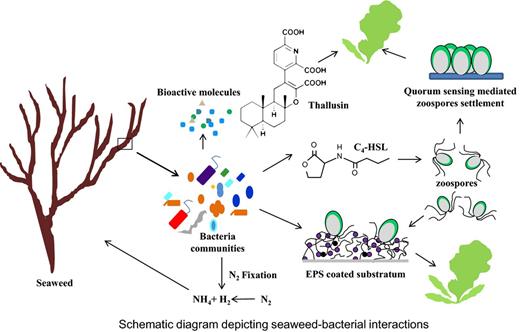
Seaweed–microbial interactions: key functions of seaweed-associated bacteria
We have introduced a new topic in this area and suggested future research to understand seaweed-bacteria interactions in greater detail.
Abstract
Seaweed-associated bacteria play a crucial role in morphogenesis and growth of seaweeds (macroalgae) in direct and/or indirect ways. Bacterial communities belonging to the phyla Proteobacteria and Firmicutes are generally the most abundant on seaweed surfaces. Associated bacterial communities produce plant growth-promoting substances, quorum sensing signalling molecules, bioactive compounds and other effective molecules that are responsible for normal morphology, development and growth of seaweeds. Also, bioactive molecules of associated bacteria determine the presence of other bacterial strains on seaweeds and protect the host from harmful entities present in the pelagic realm. The ecological functions of cross-domain signalling between seaweeds and bacteria have been reported as liberation of carpospores in the red seaweeds and settlement of zoospores in the green seaweeds. In the present review, the role of extracellular polymeric substances in growth and settlement of seaweeds spores is also highlighted. To elucidate the functional roles of associated bacteria and the molecular mechanisms underlying reported ecological phenomena in seaweeds requires a combined ecological, microbiological and biochemical approach.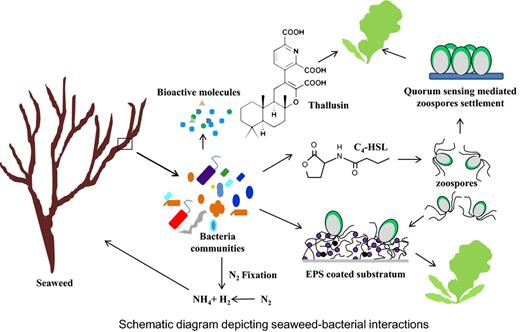
Open in new tab
Last edited:
Because I believe in emulating nature, I choose to run refugiums on same light cycle as display tank to maximize passive alkalinity bufferring from aroggonite sandbed with pH swings from 8.3 - 7.7
Note robust circulation at the surface to promote gas exchange.
Note reverse flow undergravel filter with cryptic plenum promoting nutrient recycling.
Note Hippo Tang grazing on Feather Caulerpa (Paspoide).

 journals.biologists.com
journals.biologists.com
Note robust circulation at the surface to promote gas exchange.
Note reverse flow undergravel filter with cryptic plenum promoting nutrient recycling.
Note Hippo Tang grazing on Feather Caulerpa (Paspoide).

Coral calcification under daily oxygen saturation and pH dynamics reveals the important role of oxygen
ABSTRACT. Coral reefs are essential to many nations, and are currently in global decline. Although climate models predict decreases in seawater pH (∼0.3 units) and oxygen saturation (∼5 percentage points), these are exceeded by the current daily pH and oxygen fluctuations on many reefs...
ABSTRACT
Coral reefs are essential to many nations, and are currently in global decline. Although climate models predict decreases in seawater pH (∼0.3 units) and oxygen saturation (∼5 percentage points), these are exceeded by the current daily pH and oxygen fluctuations on many reefs (pH 7.8–8.7 and 27–241% O2saturation). We investigated the effect of oxygen and pH fluctuations on coral calcification in the laboratory using the model species Acropora millepora. Light calcification rates were greatly enhanced (+178%) by increased seawater pH, but only at normoxia; hyperoxia completely negated this positive effect. Dark calcification rates were significantly inhibited (51–75%) at hypoxia, whereas pH had no effect. Our preliminary results suggest that within the current oxygen and pH range, oxygen has substantial control over coral growth, whereas the role of pH is limited. This has implications for reef formation in this era of rapid climate change, which is accompanied by a decrease in seawater oxygen saturation owing to higher water temperatures and coastal eutrophication.Attachments
"Reverse Undergravel Filter"! Totally ridiculous. Who would use such a thing? ;FacepalmBecause of recent inquiries on another thread concerning reverse flow undergravel filter function, I forgot to emphasize the added benefit of plenum void under sandbed as a cryptic refugium.
Couldn't possibly Paul as we know old school is dead and buried and didn't work.then so won't work now......Ermm hang on a mo."Reverse Undergravel Filter"! Totally ridiculous. Who would use such a thing? ;Facepalm
@Paul B"Reverse Undergravel Filter"! Totally ridiculous. Who would use such a thing? ;Facepalm
People in the know would use them.
Anytime I can get microbes & sponges to recycle nutrients into live food, I go with Nature‘s biochemistry.
I think Mother Nature knows best and I have found “It’s not nice to fool Mother Nature”. As a “Laissez fair“ reefkeeper, I subscribe to Walter Adley quote:
[As many naturalists and environmentalists have suggested, we should set aside our arrogance,
our desire to conquer and control everything, and walk hand in hand with Mother Nature. -Walter Adey ]
Just did complete some aquascaping in 75G twenty five year mature and youngest tank at 10 months. Both have reverse flow uv filters and both use cannister filter as high flow cryptic refugiums.
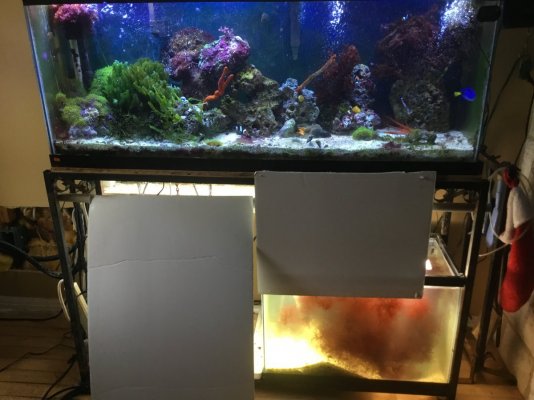
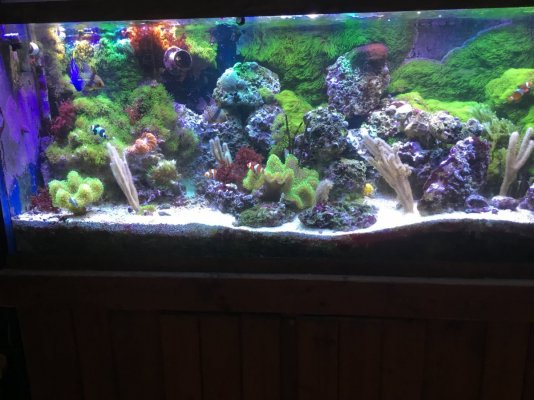
@Paul B@Paul B
People in the know would use them.
Anytime I can get microbes & sponges to recycle nutrients into live food, I go with Nature‘s biochemistry.
I think Mother Nature knows best and I have found “It’s not nice to fool Mother Nature”. As a “Laissez fair“ reefkeeper, I subscribe to Walter Adley quote:
[As many naturalists and environmentalists have suggested, we should set aside our arrogance,
our desire to conquer and control everything, and walk hand in hand with Mother Nature. -Walter Adey ]
Just did complete some aquascaping in 75G twenty five year mature and youngest tank at 10 months. Both have reverse flow uv filters and both use cannister filter as high flow cryptic refugiums.

I embrace this more now than ever.
In 51 years of Reefing, Nutrient Management for me is developing multiple nutrient pathways that recycle both inorgananic & organic nutrients into live food to feed hungry mouths.
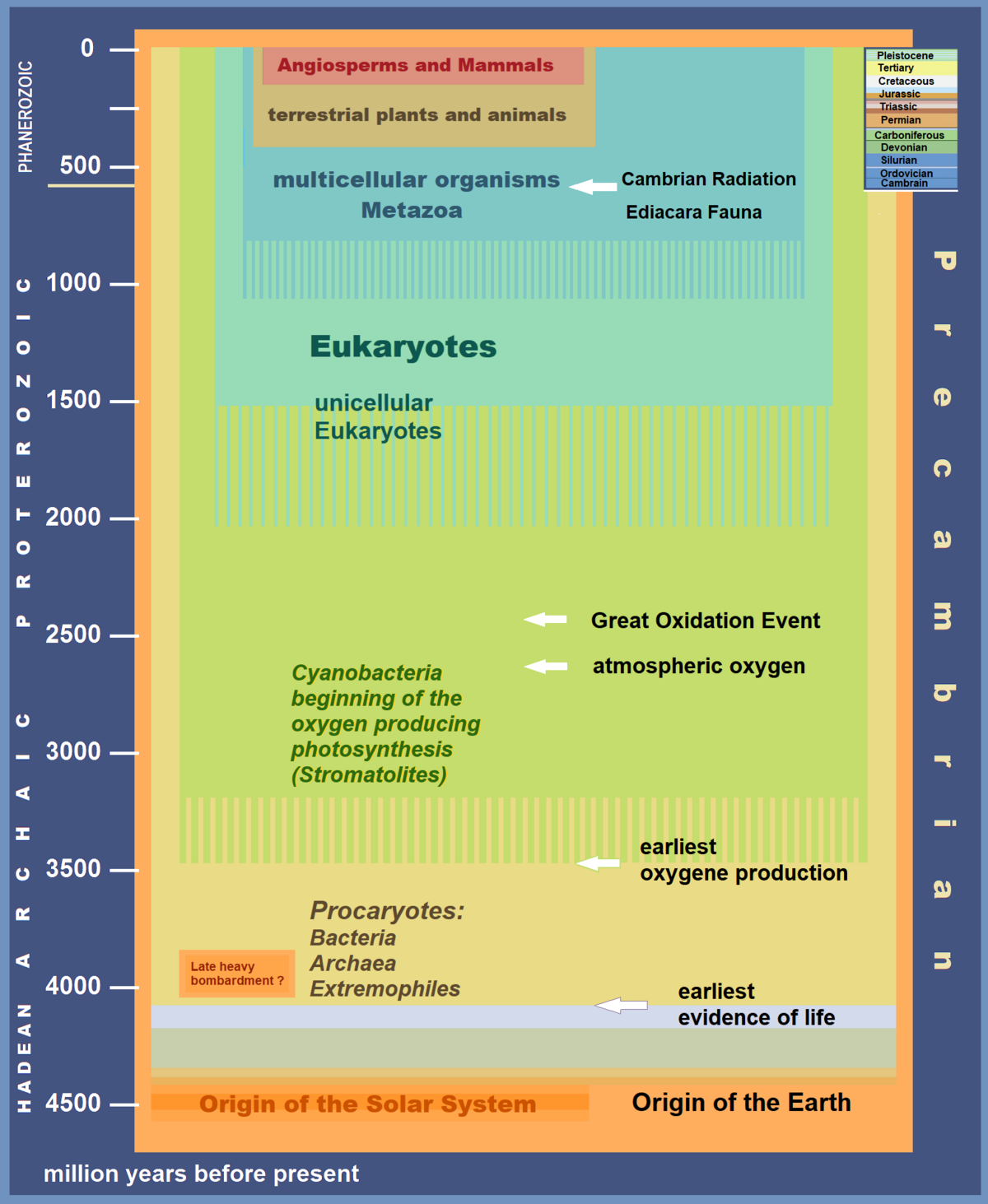
Great Oxidation Event - Wikipedia
What effect did the Great Oxidation Event have on the climate?
“Scientists behind the study used detail modeling and discovered that an increase in tectonic activity produced new volcanoes prior to the Great Oxidation Event which pumped big amounts of carbon dioxide in the air which led to the warming of the climate, increased rainfall, and leading to more minerals washed into the ...”
The Great Oxidation Event on Earth occurred > 2 billion years ago and blue green Cynobacteria made it happen. Previous to the event, earths early athmosphere was methane & sulfur and all microbes were anarobial. Cynobacteria did two things to make earth habitual for people that breath oxygen & exhale carbon dioxide.& plants that breath carbon dioxide & exhale oxygen.
Cynobacteria break down water in two seperate processes. Nitroven fixation is the process in which bacteria chemistry converts free nitrogen gas molecule into NO4 which is absorbed into bacteria biomass along with other nutrients as a primary producer that moves carbon up the food chain. The more important process is reduction chemistry in which bacteria seperate the chemical bond of nitrate into a free nitrogen gas molecule and consume oxygen to grow, which is denitrification.
The two process discribed above require efficient gas exchange at water air interface to use gas constants of oxygen & carbon dioxide in water to seek Dynamic Equilibrium.
Without nitrogen fixation, planet earth would be brown, not green. One other process to cycle molecular nitrogen into a usable nutrient of NO4 is intense voltage in lightening, that’s why April showers bring May flowers.
In a recent post on rates of reproduction of nitrification bacteria:
Nitrification bacteria in general, will double their populations in 15 minutes.
DeNitrification bacteria will double in population in
16 hours. Considering that to break apart NO4, to use oxygen and free nitrogen as a gas, consumes a lot of energy, thus reproduction is slowed down.
Today is a busy day. I will finish planting winter garden when it gets light. While it’s still dark I will continue on cycling a 55G tank on a duplex stand, to be used as an inspection/curing tank as I thin out GSP covered live rock to sell to LFS here in Austin.
Nitrification bacteria in general, will double their populations in 15 minutes.
DeNitrification bacteria will double in population in
16 hours. Considering that to break apart NO4, to use oxygen and free nitrogen as a gas, consumes a lot of energy, thus reproduction is slowed down.
Today is a busy day. I will finish planting winter garden when it gets light. While it’s still dark I will continue on cycling a 55G tank on a duplex stand, to be used as an inspection/curing tank as I thin out GSP covered live rock to sell to LFS here in Austin.
Attachments
Recently in a thread on carbon dosing phytoplankton culture in addition to Guillard f2, an interesting comment was made indicating that natural “carbon dosing” of CO2 consumed as carbonate to combine during photosynthesis to form glucose, which is organic carbon.
@Dana Riddle said it this way, photosynthesis combines the organic with the inorganic world.
@Dana Riddle said it this way, photosynthesis combines the organic with the inorganic world.

The Bacterial “Rip Clean” Method
https://www.reef2reef.com/forums/member-tanks.52/ This marks the start of documenting Reef Actif protocoal. I estimate that 120G display holds 130G of water. This is the third day and second dose was administered. I prefer to measure dry weight with scale. I added 3g in first and second...
 www.reef2reef.com
www.reef2reef.com
@EeyoreIsMySpiritAnimal
While I have read Steve Tyree’s book on Cryptic zone filtration, the real players are cryptic sponges. Cryptic sponges proliferate on back side of live rock in my display tank as well as in cryptic refugium.
Cryptic sponges absorb DOC & POC from the water and would double in size in a few hours except for sloughing off carbon rich detritus to feed the microbial loop.
While I have read Steve Tyree’s book on Cryptic zone filtration, the real players are cryptic sponges. Cryptic sponges proliferate on back side of live rock in my display tank as well as in cryptic refugium.
Cryptic sponges absorb DOC & POC from the water and would double in size in a few hours except for sloughing off carbon rich detritus to feed the microbial loop.
To keep things interesting.The climate crisis has accelerated scientific knowledge of the reef environment greatly in the last 10-15 years, but there's still much to learn. And some of the answers to our reef aquarist questions can lie buried 'somewhere on the internet'.
For example, I had a microbiome analysis done on my system which was very interesting, but wasn't able to answer the question 'Why did my system have the types and the percentages of bacteria/archaea that it did?'. Then I stumbled on this:
https://www.sciencedaily.com/releases/2016/10/161012144511.htm
Corals promoting the growth of certain types of bacteria in the reef water column that they then preferentially feed upon. The implications in regards to our captive systems are of great interest and suggest (to me) that any methodologies or actions that work against the corals' own efforts to promote an advantageous environment for themselves is bound to be counter productive over the long term.
Similar threads
- Replies
- 3
- Views
- 208
- Replies
- 2
- Views
- 146
- Replies
- 9
- Views
- 345




